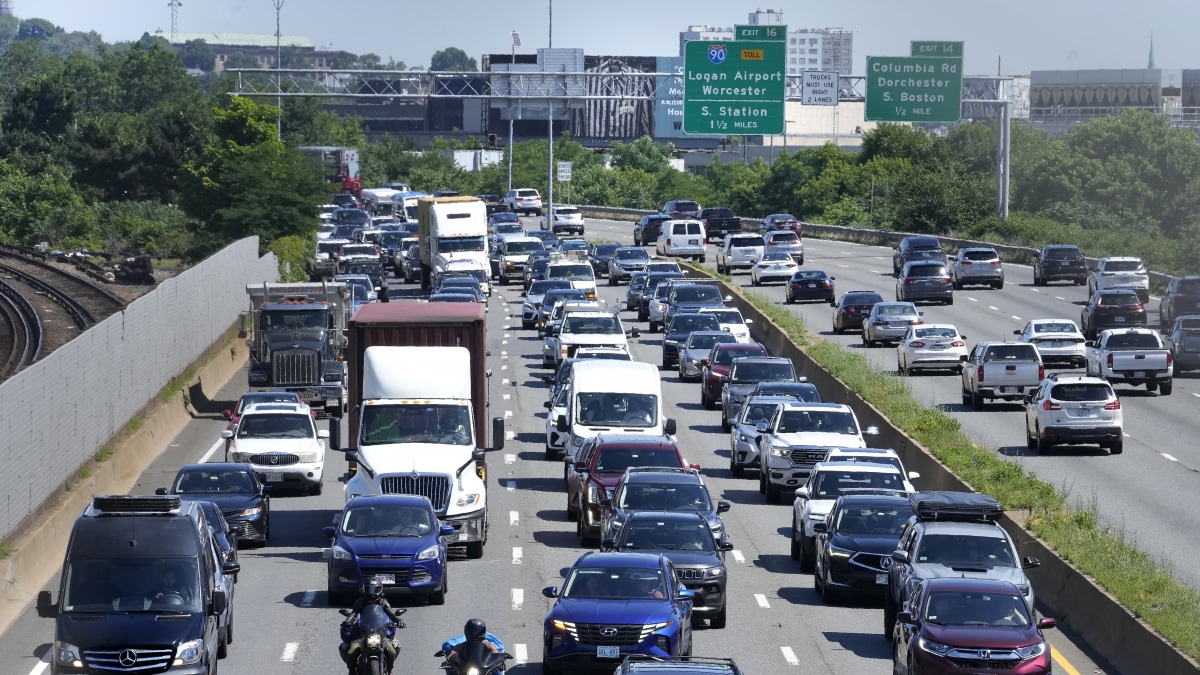
Traffic crawls along Interstate 93 heading south from Boston, Wednesday, July 3, 2024, as people leave the city. (Getty Images)
NEW YORK — High fuel costs and the threat of a hurricane are not expected to dampen Americans’ desire to travel this summer. Vacationers are bracing for record numbers of trips for the Fourth of July festivities.
Group of motorists AAA expects a record number of nearly 71 million people to travel on Independence Day, growth similar to pre-pandemic trends.
According to AAA’s forecast, about 60 million people will travel by car to their destinations, and nearly 6 million will travel by plane. In addition, about 4.6 million people will travel by bus, train or cruise during the holidays.
“We’ve never seen numbers like this,” said AAA spokesman Andrew Gross. “Travel in 2024 looks like what 2020 would have been like if the pandemic hadn’t happened,” he added.
The U.S. summer tourism is being watched closely from multiple angles this year, and could be a key gauge of consumer confidence for central bank officials and policymakers in an election year.
Inflation remained flat in May despite rising consumer spending, bolstering hopes that the U.S. Federal Reserve could keep inflation under control while avoiding a recession.
Gasoline prices have fallen in recent months, with the national average price for a gallon of motor fuel at $3.50 on Tuesday, down 3 cents from last year. Domestic airfare is 2 percent cheaper than last year, with the average domestic round-trip costing $800, according to AAA booking data.
‘Want to travel’
Despite recent declines, fuel prices are still well above historical levels. The average price for a gallon of gasoline was $2.74 during the week of July 4 in 2019, and the weekly average price from 2015 through 2019 was less than $2.50 per gallon, according to data from the U.S. Energy Information Administration.
Still, vacationers’ travel plans this year are largely unaffected by higher prices, according to a survey of more than 1,000 people by auto retailer American Trucks.
Four-week average U.S. gasoline demand hit a one-year high of 9.2 million barrels per day (bpd) last week as retailers stocked up ahead of the holidays, EIA data showed on Wednesday. Four-week average jet fuel demand was 1.7 million bpd, identical to a seven-month high in June.
“What we’ve found is that it’s more the speed of change than the price itself that affects the psyche of consumers,” said John LaForge, head of real asset strategy at the Wells Fargo Investment Institute.
According to LaForge, the price of gasoline has not risen or fallen dramatically over the past six months, so the consumer psyche has had little effect.
It is unlikely that holidaymakers in the US will be affected by Hurricane Beryl, which has been wreaking havoc on a number of Caribbean islands since Monday. However, the hurricane is expected to weaken significantly when it reaches Mexico’s Yucatán Peninsula on Thursday evening.
In addition, U.S. fuel supplies are better than in recent years, giving motorists a buffer against sudden price swings if the hurricane disrupts refining operations.
U.S. gasoline inventories stood at about 231.7 million barrels for the week ended June 28, up 5.6% from the same period last year, EIA data showed. Jet fuel inventories were up 4.7% from last year.
“Americans are optimistic and want to travel, there’s no denying that,” said Patrick De Haan, analyst at GasBuddy.
